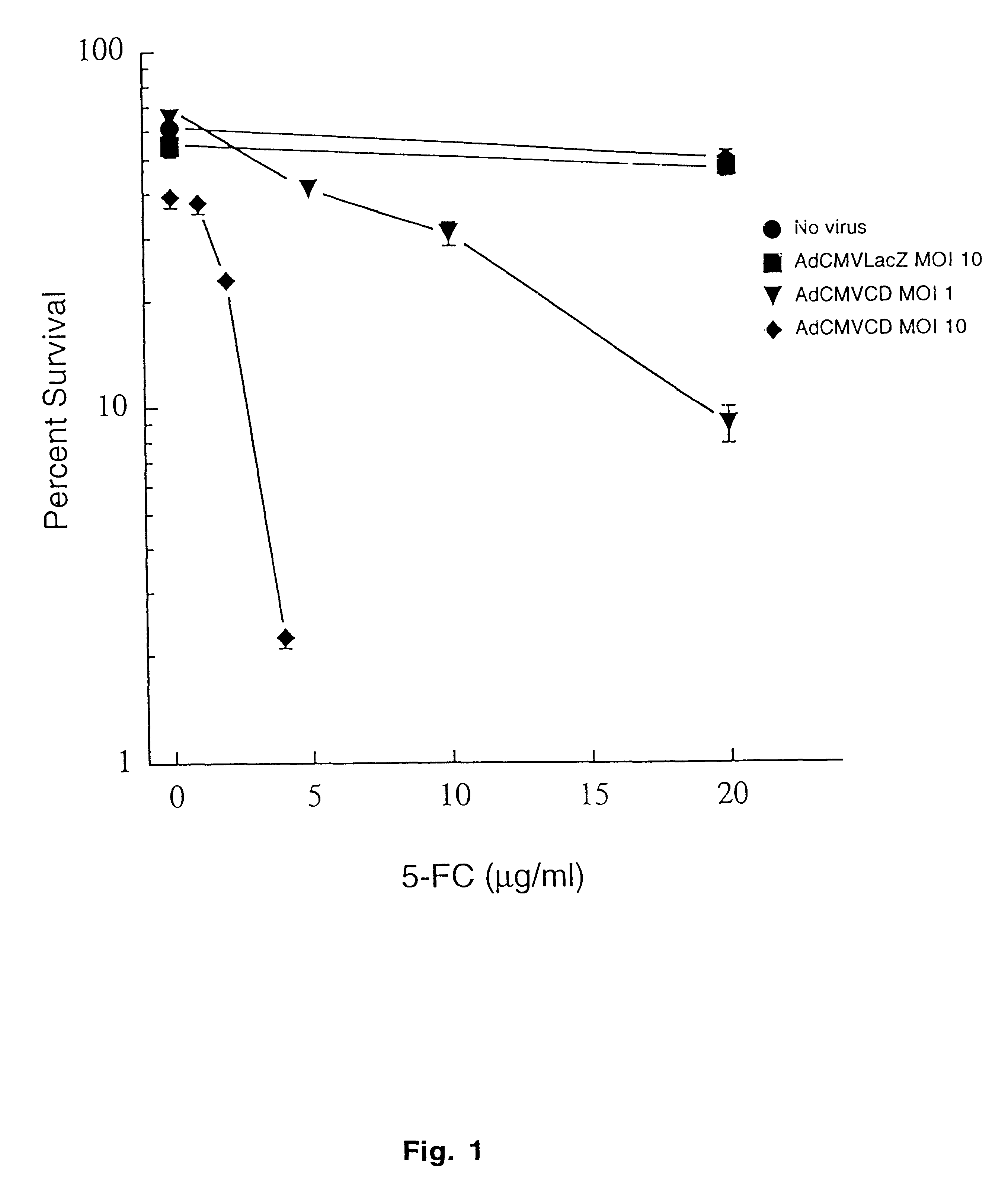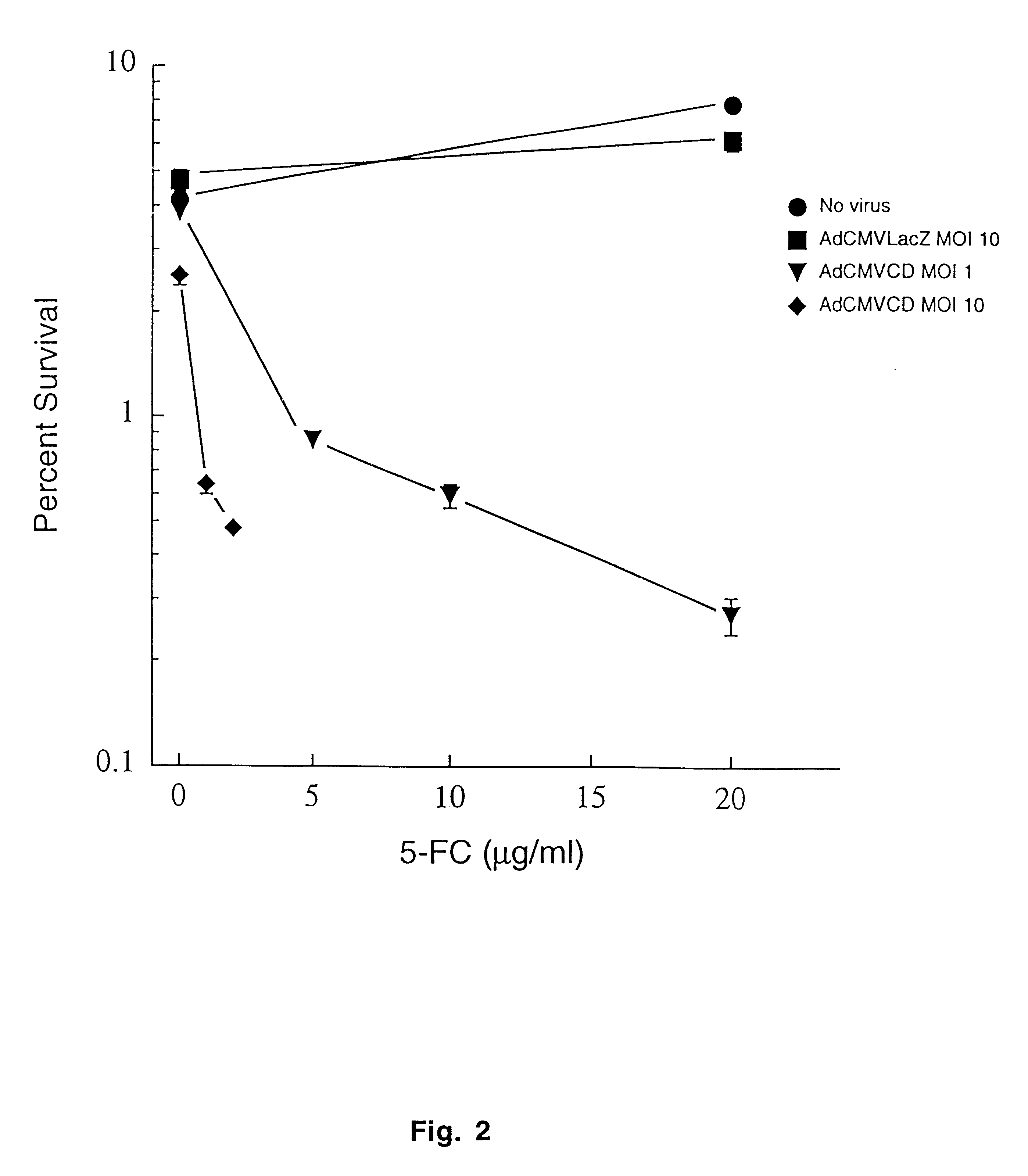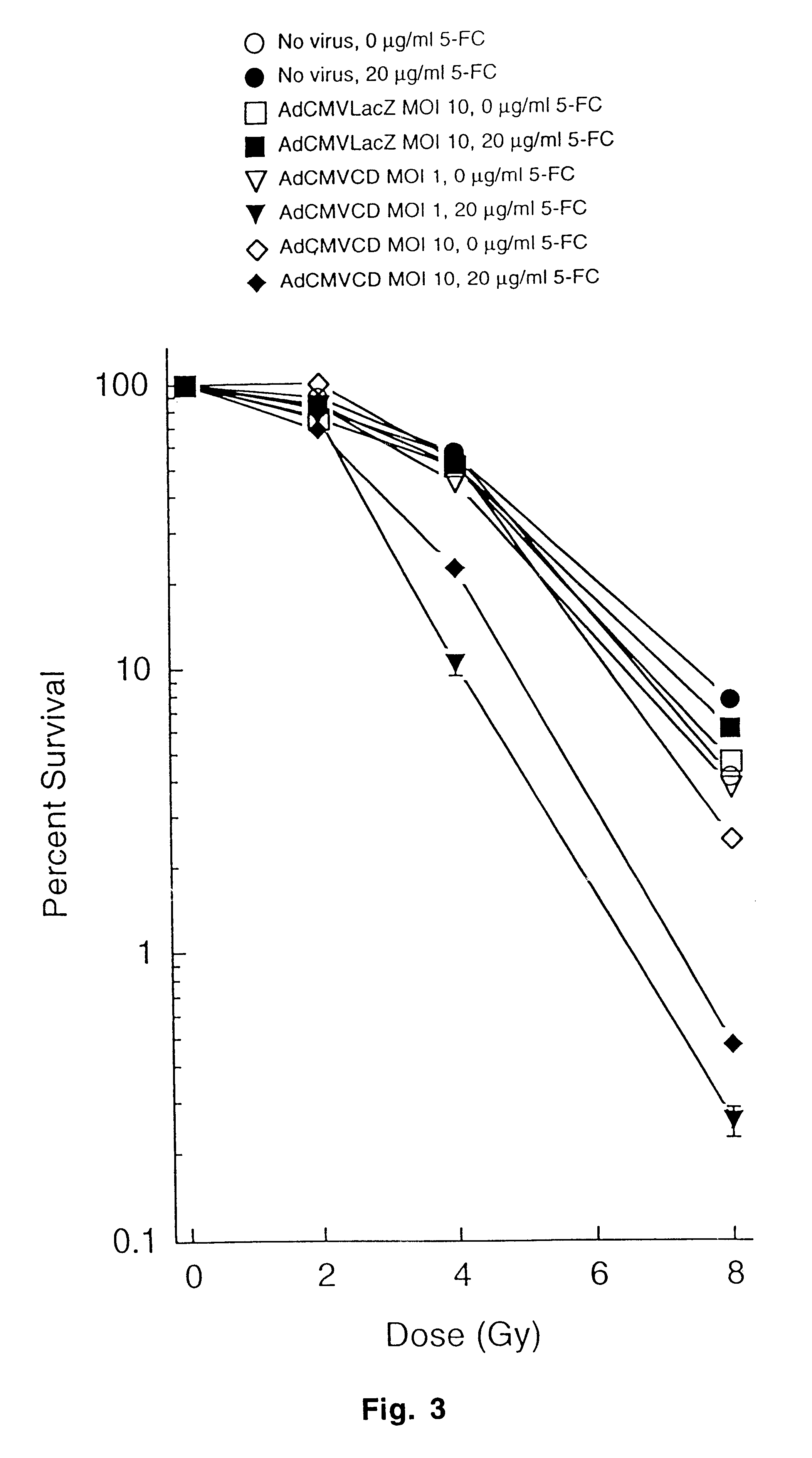Molecular chemotherapy enhancement of radiotherapy
a radiotherapy and molecular technology, applied in the field of molecular biology, radiation oncology and cancer therapy, can solve the problems of prolonged tumor growth inhibition, limited clinical applications for cancer gene therapy, and tumor regression, and achieve the effect of prolonging tumor growth inhibition
- Summary
- Abstract
- Description
- Claims
- Application Information
AI Technical Summary
Benefits of technology
Problems solved by technology
Method used
Image
Examples
example 1
Cell Culture
The human colon carcinoma cell line WiDr (ATCC CCL-218 Rockville, Md.) was grown in Earle's modified Eagle's medium (EMEM) (Gibco-BRL, Grand Island, N.Y.) supplemented with 10% fetal bovine serum (FBS) (Summit, Fort Collins, Colo.), 2 mM glutamine, and 1% non-essential amino acids in a humidified atmosphere with 5% CO.sub.2. The human cholangiocarcinoma cell line SK-ChA-1 was the gift of A. Knuth, Ludwig Institute for Cancer Research, London, UK. SK-ChA-1 cells were maintained in RPMI-1640 medium supplemented with 2 mM L-glutamine and 10% FBS at 37.degree. C. in a humidified 5% CO.sub.2 atmosphere. The transformed human embryonic kidney cell line, 293, is an E1A trans-complementing cell line (Microbix, Toronto, Canada) utilized for viral propagation and titering and was maintained in Dulbecco's Modified Eagle's medium-F12 supplemented with 2 mM L-glutamine and 10% FBS at 37.degree. C. in a 5 humidified 5% CO.sub.2 atmosphere. The cells were passaged using 0.05% trypsin a...
example 2
5-FC (Sigma, St. Louis, Mo.) was dissolved in PBS at a stock concentration of 10 mg / ml. 5-FU (50 mg / ml, Hoffman-LaRoche, Inc., Nutley, N.J.) was used as a control for clinical therapy of both colon and cholangiocarcinoma in current medical practice.
example 3
Adenovirus Production and Characterization
The production, characterization, and functional validation of the AdCMVCD vector was described (14, 15). Briefly, the cytosine deaminase gene was cloned into the adenoviral shuttle vector pACCMVpLpARS (+) (provided by R. Gerard, Katholieke Universiteit Leuven, Ontario, Canada) and then co-transfected with the pJM17 rescue plasmid (provided by Dr. F. Graham, McMaster University) into 293 cells to allow for homologous recombination (28). Individual plaques were isolated and subjected to 2 further rounds of plaque purification. The final adenovirus was validated by PCR and restriction analysis. The ability of ADCMVCD to induce a functional cytosine deaminase enzyme was determined by measuring conversion of .sup.3 H-5-FC to .sup.3 H-5-FU by infected cell lysate (26).
PUM
| Property | Measurement | Unit |
|---|---|---|
| diameters | aaaaa | aaaaa |
| diameters | aaaaa | aaaaa |
| concentration | aaaaa | aaaaa |
Abstract
Description
Claims
Application Information
 Login to View More
Login to View More - R&D
- Intellectual Property
- Life Sciences
- Materials
- Tech Scout
- Unparalleled Data Quality
- Higher Quality Content
- 60% Fewer Hallucinations
Browse by: Latest US Patents, China's latest patents, Technical Efficacy Thesaurus, Application Domain, Technology Topic, Popular Technical Reports.
© 2025 PatSnap. All rights reserved.Legal|Privacy policy|Modern Slavery Act Transparency Statement|Sitemap|About US| Contact US: help@patsnap.com



